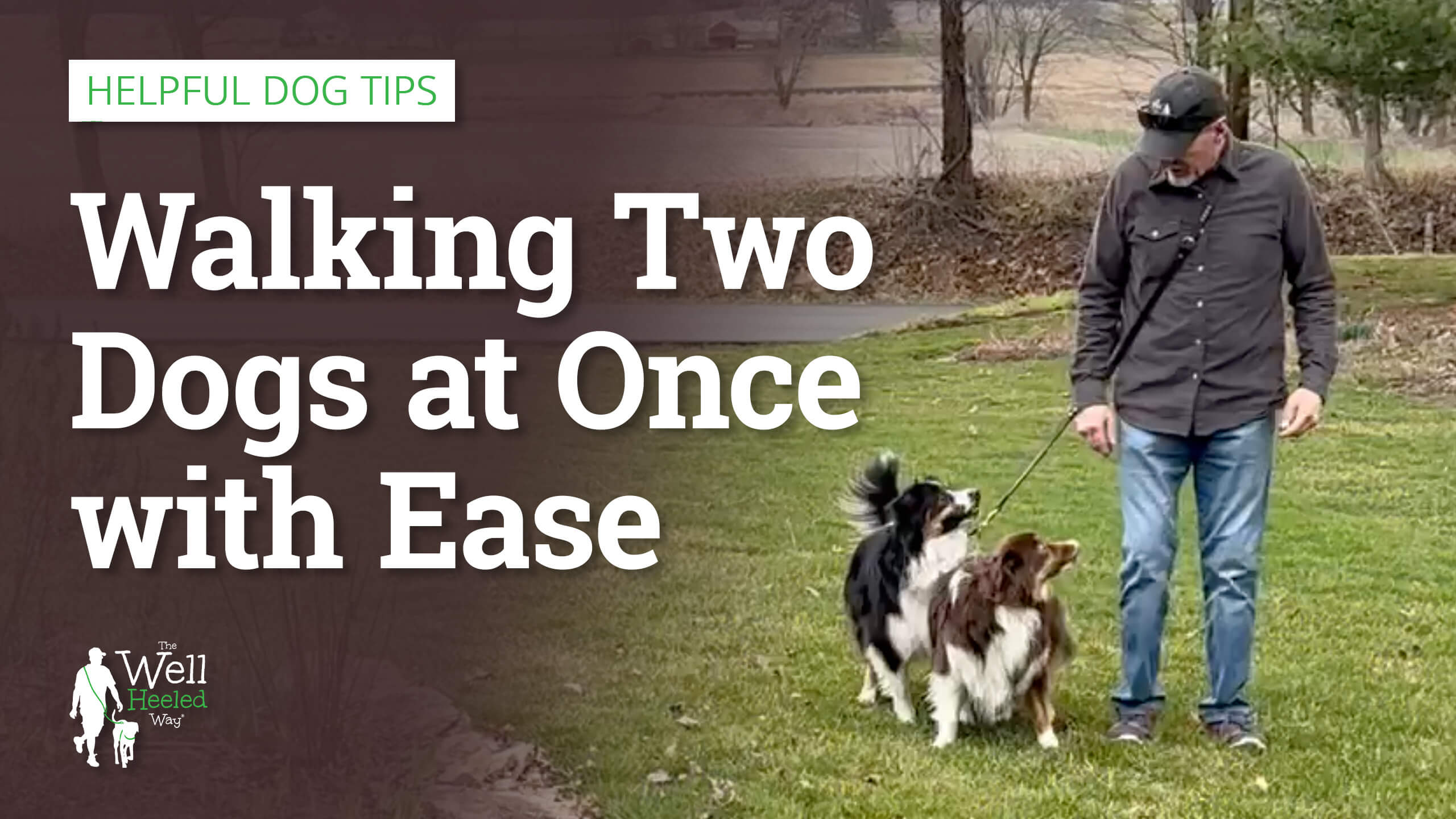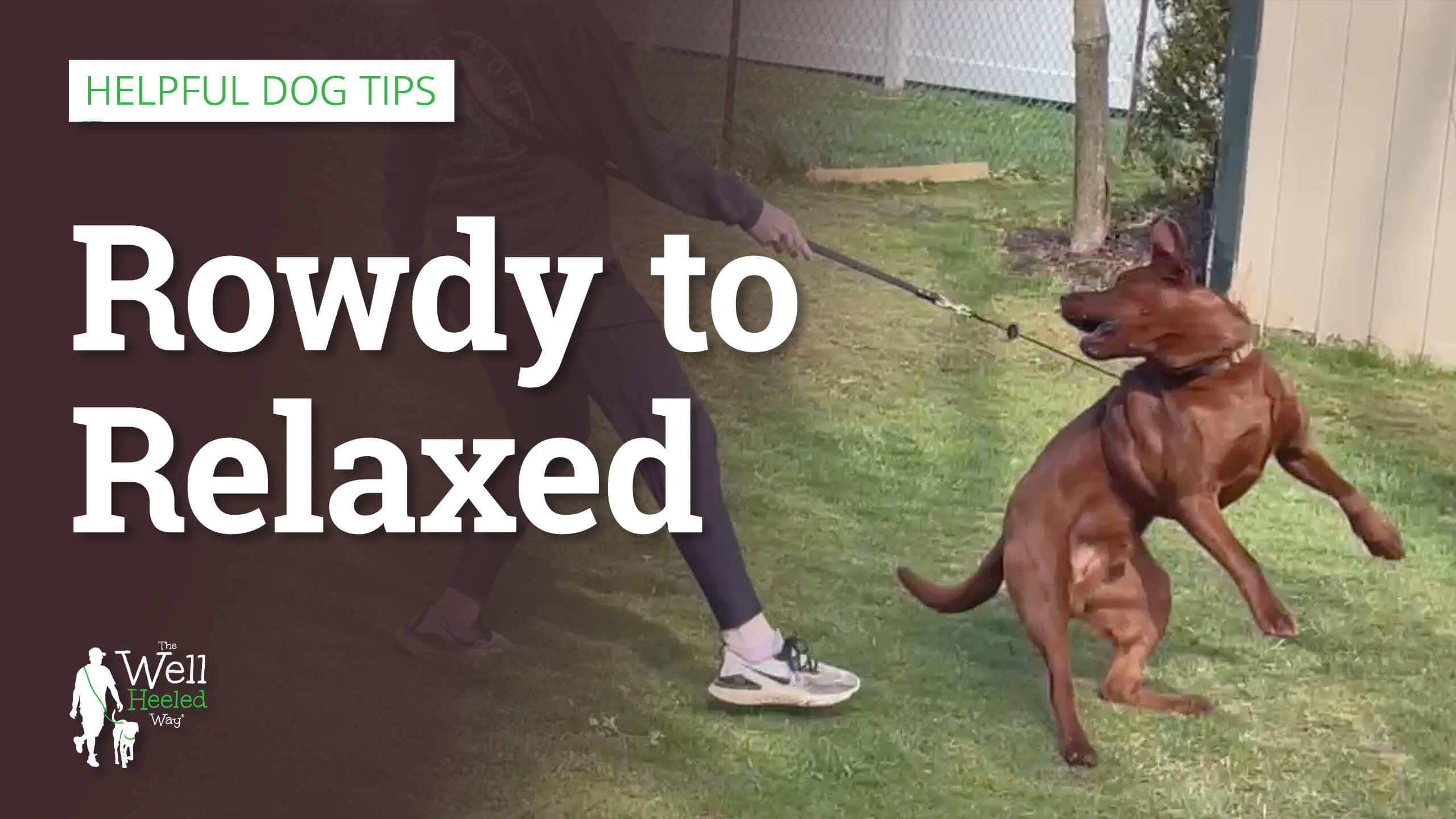Here I have Maya, a terrier mix with extremely high energy who will come right up and get in your face. It’s important to correct this behavior even if she doesn’t intend to harm—she’s just excitable. So where do I start? At the beginning, and that means I work on Maya’s attention.
Keeping your dog’s attention is the key to dog training and guiding her behavior. Attentiveness is the first thing I teach my dogs and the dogs that come to me for training. Without it, how will you build any kind of relationship with your dog? She must learn that she will always take her cues from you. In order to establish that trust, you must first instill attentiveness.
Attention and PLACE
Working with Maya, I used operant conditioning with very little distraction in an effort to get her to look at me and to “sit” for 10 times in a row. Work on these attention exercises in a smaller space using clicks and rewards to start to build the relationship. It’s important to wait until she’s not bumping, licking, or putting teeth on me before I reward her. Repeat commands frequently, using words like “place” and “stay” to teach your dog to remain where you want her. Continue to repeat and also incorporate more variation as you progress.
Attention when OUTSIDE
Next, move your training sessions outside with more space, and a longer training line. Repeat the same kind of attention exercises and commands. Vary your environment, but be consistent with the commands and expectations. And remember, keep sessions short! Much like you and I, if your dog gets bored, her attention is likely to waver.
Attention during TRIGGERS
Maya has a tremendous play drive meaning she really “goes crazy” around other dogs. So I really need to work on focusing her attention so that it is on me, not on triggers that are going to be tempting to her. To work on this, I added another level of distraction by adding another dog to our training sessions and again aim for 10 consecutive behaviors. When your dog focuses on you and not the other dog (or whatever distraction you are using), reward and reinforce.
Sit amidst DISTRACTIONS
Then I continue to add quite a few dogs at once to really amp up the distractions. This may seem a bit overwhelming, but aim first to simply get her attention, then reinforce the attentiveness. Walk away from her, then get her to sit, maybe reward with just a touch, not always a treat. It’s important to remember that we use treats/food frequently at first to imprint behaviors, but as we progress, it’s vital that the simple command is enough to incite the behavior.
As you can see, eventually I was able to get Maya’s attention — even in the midst of her most favorite playtime activities and during highly distracting moments. This form of “attention training” is essential as the foundation for all dog training. Moving forward, her training will be easier as I now have gained a willing and attentive follower.
As always, you have to keep working at it—keeping your dog’s attention doesn’t just happen! Practice, patience, and perseverance are so important when building your relationship with your furry friends!
Keeping your dog’s attention is the key to guiding her behavior.
This week we are focusing on:
- Attention and PLACE
- Attention when OUTSIDE
- Attention during TRIGGERS
- Sit amidst DISTRACTIONS


